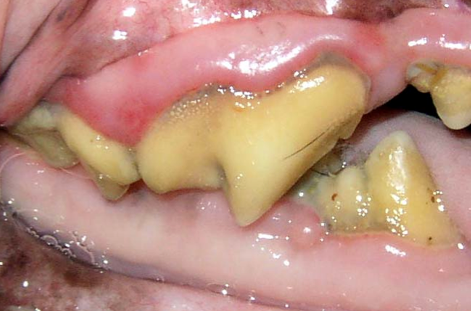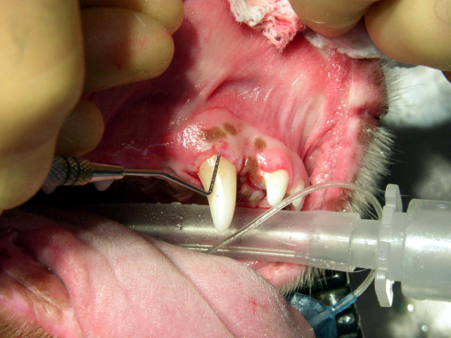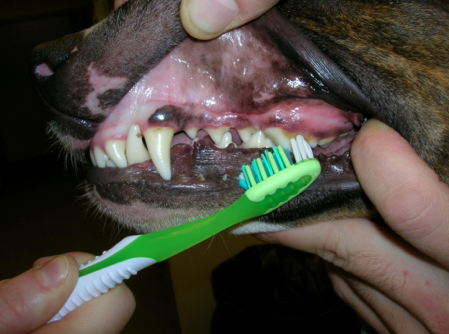Dental problems in dogs and cats
Dental problems are very common in dogs and cats. Scientific studies show that by the tender age of three, over 80% of dogs have significant dental disease that will benefit from professional treatment. Left untreated, the consequences of dental problems can go way beyond bad breath!
Consequences of advanced dental disease include:
This all leads to a diminished quality of life. Preventing dental disease is the best thing we can do to help our pets live longer and better lives.
What you can do to prevent dental disease in your dog or cat
The good news is that, for the most part, dental disease is preventable. The foundations of preventative dentistry for dogs include daily tooth brushing and regular professional dental treatment – exactly the same things that humans do to prevent dental problems. The big difference is that professional dental treatment in dogs requires general anesthesia.
Anesthesia and safety
Fear of general anesthesia is a natural concern voiced by many owners when a dental procedure is recommended. However, the risks and consequences of chronic oral infection are far greater than the risk of an anesthetic complication.
Appropriately administered general anesthesia entails extremely low risk for the patient. We can minimize risks to the patient by:
Many patients are awake and standing within 15 to 20 minutes of completion of the procedure and go home the same day. Although anesthesia will never be 100% risk-free, modern anesthetics and patient evaluation techniques minimize the risks, and millions of dental scaling procedures are safely performed in veterinary hospitals each year.
Why general anesthesia is needed for dental treatment
It sure would be nice if veterinarians could provide professional dental treatment without anesthesia. Unfortunately, this just isn’t the case. Dental tartar is firmly adhered to the surface of the teeth. Scaling to remove tartar is accomplished using ultrasonic and sonic power scalers, plus hand instruments that must have a sharp working edge to be used effectively. Even slight head movement by the patient could result in injury to the oral tissues of the patient, and the operator may be bitten when the patient reacts.

Professional dental scaling includes scaling the surfaces of the teeth both above and below the gingival margin (gum line), followed by dental polishing. The most critical part of a dental scaling procedure is scaling the tooth surfaces that are within the gingival pocket (the subgingival space between the gum and the root), where periodontal disease is active.
Access to the subgingival area of every tooth is impossible in an unanesthetized canine or feline patient. Removal of dental tartar on the visible surfaces of the teeth has little effect on a pet's health, and provides a false sense of accomplishment. The effect is purely cosmetic.
Inhalation anesthesia using a cuffed endotracheal tube provides three important advantages:
Without anesthesia, the surfaces of the teeth facing the tongue cannot be thoroughly examined, and areas of disease and discomfort are likely to be missed.
Steps to take at home to ensure your pet's dental health
To minimize the need for professional dental scaling procedures and to maintain optimal oral health, pet owners should provide daily tooth brushing starting at an early age. This should include brushing or use of other effective techniques to retard accumulation of dental plaque, such as dental diets and chew materials. This, combined with periodic examination of the patient by a veterinarian and with dental scaling under anesthesia when indicated, will optimize life-long oral health for dogs and cats.

For information on effective oral hygiene products for dogs and cats, visit the Veterinary Oral Health Council web site (www.VOHC.org).
Author’s note: Some of the content presented in this article has been summarized from the website of the American Veterinary Dental College. Information for the public about dental problems in animals can be obtained at www.AVDC.org